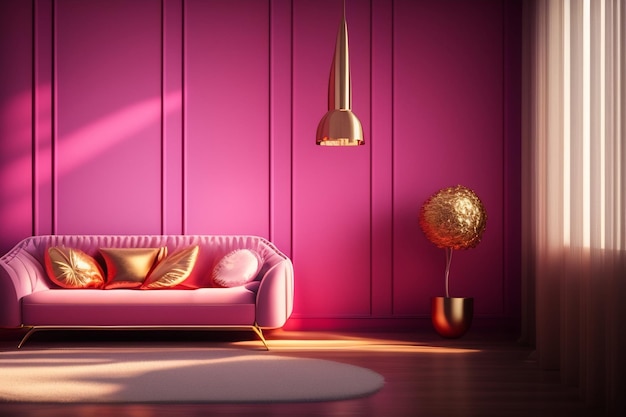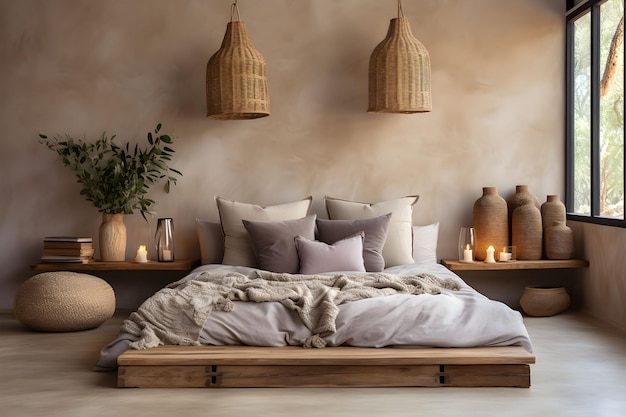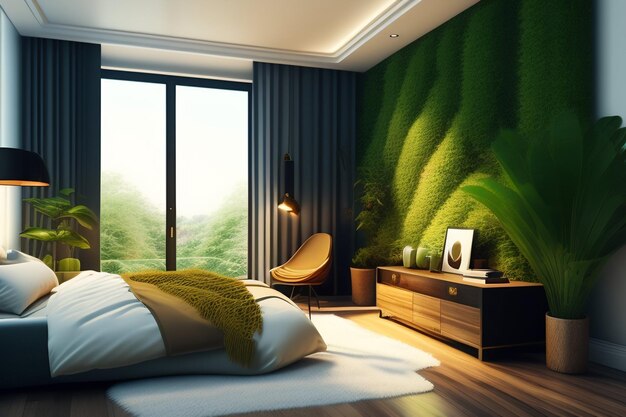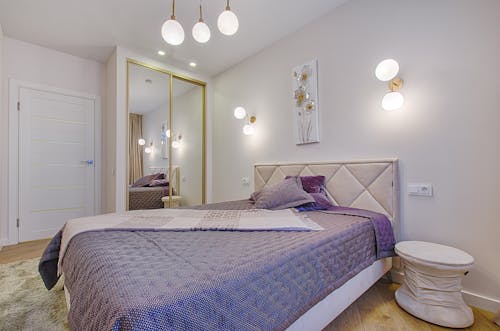The energy and atmosphere of your living area are greatly influenced by the color palette in your bedroom. Insider spoke with renowned color psychology expert Amy Max to gain a deeper understanding of the enormous impact that particular hues can have on your mood and overall energy.
Her knowledge illuminates the advantages that specific colors can have for your mental health, so choosing colors for your bedroom intelligently takes into account not just what looks good but also how you feel and move in the room.
1. Colors in the rose or blush family can evoke peacefulness

Lighter reds, like blush, rose, and coral pink, are the most effective at establishing a calm and relaxing mood. These colors can promote relaxation and add to the overall tranquility of an area.
Color psychologist Amy Wax discussed the relaxing effects of these hues, especially in professional contexts such as psychologists’ and psychiatrists’ offices. Clients frequently ask for the addition of light pink tones in these rooms since they prioritize relaxation.
Light pink is easy to digest visually, according to Max, who also described it as a color that provides a mental break without requiring a lot of cognitive work.
Max further pointed out that the fact that these colors are so common in people’s wardrobes adds to the comfort and familiarity that come with them on a bodily level. This familiarity can help create a more welcoming and laid-back atmosphere, highlighting the beneficial effects that color selections can have on our mental and emotional health.
2. Shades of blue can inspire rest

In an interview with Insider, Amy Max emphasized the relaxing effects of blue—blue, blue-green, and blue-gray, among other hues—when used in bedroom décor.
As a result of its frequent associations in psychology with trust, blue is a color that inherently promotes feelings of security and calm. According to Max, the color blue tends to arouse feelings of warmth and honesty, creating an atmosphere that allows people to relax and let their guard down.
You might go for a more striking color like navy or a softer shade of blue to accomplish this calming effect. Your bedroom may be made to feel harmonious and peaceful by counterbalancing these blues with lighter hues and complimentary creams. This way, the color scheme will still suit your tastes and promote a peaceful atmosphere.
3. Neutral browns and taupes tend to feel like embracing

Combining taupe and brown tones into your interior design may make a big difference and give a room a very cozy, homey feel. Because they don’t overpower or take center stage when you walk into a room, Amy Max says these earthy tones provide a great foundation. Rather, they offer a soft, welcoming background that exudes a sense of the outdoors.
According to Max, using colors like taupe and brown can make you feel as though you’re in the middle of nature, which instantly makes you feel comfortable and at ease. These earthy tones are a flexible option for boosting the overall friendliness of your surroundings because they may be utilized as accent hues or base colors and yet manage to produce a grounded, cozy feeling.
4. Greens are associated with relaxation and security

Green may be a soothing and restful color for a bedroom, even though it’s not often the first choice—especially if you go for a muted, gray-green hue.
Green is calming, even in the entertainment industry, as seen by the fact that performers and guests frequently relax in “green rooms” before their TV appearances. Amy Max claims that the color green has a remarkable capacity to ease stress and encourage a sensation of slowing down.
Although it hasn’t always been a major color in interior design, green is becoming more and more common in many parts of the house. This comeback emphasizes how green is becoming more and more known as a color that can successfully evoke feelings of peace and relaxation, making it a significant option for people looking to create a tranquil and peaceful living environment.
5. Shades of purple can make you feel soothed and cozy

Deep purples may not be the typical option for room decor, but their inherent distinctiveness is part of what makes them so fascinating and alluring.
Max went on to emphasize plum’s grace and adaptability, calling it “the luxurious richness of a gemstone.” Plum and other deep purples provide a plethora of options for creating a variety of moods and feelings in a room.
These purple tones are less delicate than blues and more easy on the eyes than reds and yellows, which are powerful and lively. Because purple has historically been associated with royalty, rich purple decor pieces have the amazing ability to infuse a room with an air of richness and dignity, resulting in an environment that radiates opulence and grandeur.
| Home Page | Click Here |